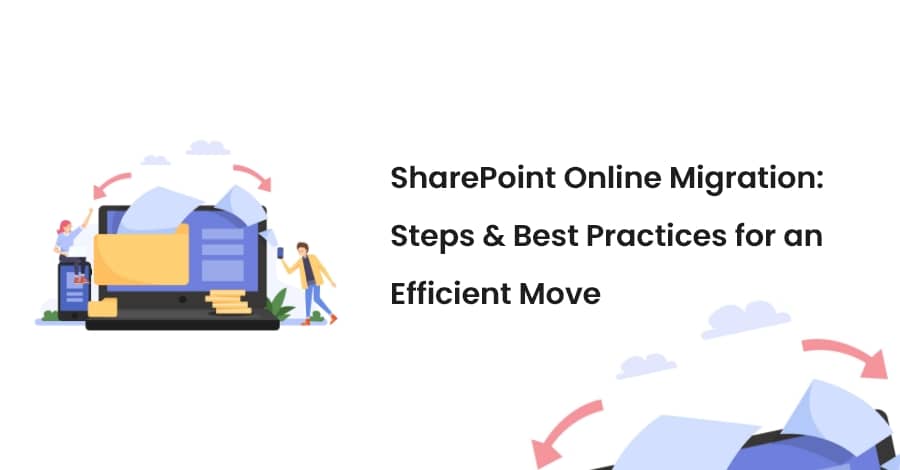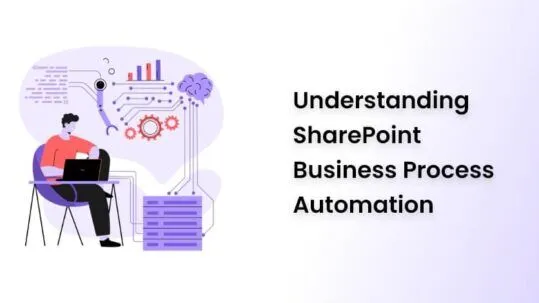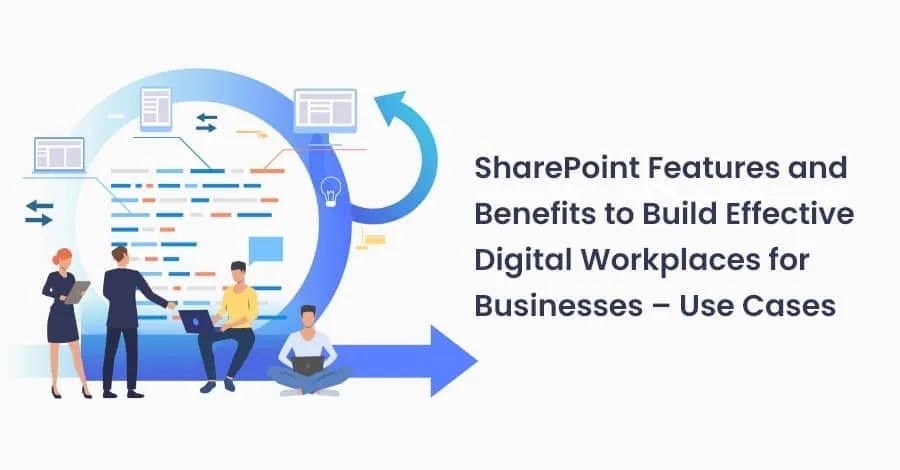
31 Jan SharePoint Online Migration: Steps & Best Practices
31 January 2023

Migrating to SharePoint Online involves careful planning and execution. We’ll delve into the crucial challenges. Next, we’ll discuss the importance of creating a solid migration plan, including determining the scope, mapping permissions, and prioritizing content.
To minimize disruption, we’ll highlight the significance of conducting thorough data cleansing and optimizing content for SharePoint Online. You’ll also discover the best practices for structuring your information architecture, leveraging metadata, and configuring search settings to enhance discoverability.
With a focus on user adoption and change management, we’ll explore strategies to train and support your employees throughout the migration process. By following these steps and implementing best practices, you can achieve a smooth SharePoint Online migration, empowering your organization with a modern and collaborative platform.
SharePoint Online Migration Steps
Plan your migration
It is important to create a detailed plan outlining the steps you will take during the migration process, including timelines and resources required. This will help ensure that the migration is completed on schedule and within budget and that all necessary resources are in place. The plan should include details such as what content will be migrated, the migration method to be used, and any customizations or third-party solutions that may be impacted by the move.
Prepare your source environment
Before migrating your content to SharePoint Online, it is important to ensure that your source environment is clean and organized, with all content and metadata properly tagged and labeled. This will help to ensure that the migration process is as smooth as possible and that all content is properly transferred to the new platform.
Perform a pilot migration
A pilot migration is a test migration of a small subset of your content. This will help you to identify any issues that may need to be addressed before migrating the entire dataset. It will also help you to ensure that the migration process is working as expected and that the final migration will go smoothly.
Perform the migration
Once you have completed the pilot migration, it is time to perform the full migration. Use the appropriate migration method to move your content to SharePoint. This may include using a third-party migration tool or using the built-in SharePoint Online migration tool.
Validate the migration
After the migration is complete, it is important to verify that all content has been successfully migrated and that all metadata and permissions have been preserved. This will help to ensure that all content is accessible and functional as expected and that there are no issues with the migration process.
Test the migration
Perform thorough testing of the migrated content to ensure that it is accessible and functional as expected. This will help to ensure that all content is properly transferred to the new platform and that there are no issues with the migration process.
SharePoint Online Migration Best Practices
Scan your source and plan accordingly:
This involves understanding where your data is located, who is using it, and whether you need it. It is also important to consider the file name and path length to prepare your data better for your new SharePoint environment. Understanding how your users have been using your content from your source can help you plan for appropriate data structures and workflows to help your end-users have a positive experience. Based on your discovery, assess your priority and choose the right tool. Not every tool can help you with your migration needs, so using the most comprehensive tool will be beneficial to your success.
Pack content correctly:
It is not advisable to migrate big chunks of data all at once as it will cause unhealthy throttling during the migration. Instead, small packages will slow your migration down. Microsoft recommends packaging at least 250 files per transfer to improve throughput. For the size, a minimum of 100 MB and less than 250 MB per package is recommended. Keep in mind that it’s faster to migrate files with a larger size than smaller ones. Files also migrate faster than objects and list items.
Before you migrate, ensure that your destination is ready:
If you classify your content pre-migration and use the governance tools that Microsoft 365 offers, your data will be securely governed, information will be appropriately protected, and you’ll be able to manage the risks right from the start. To better utilize the controls provided in SharePoint Online, you will need to plan and enforce your governance plan ahead of time.
Investing in change management is also important:
Not only will this result in a higher adoption rate, but it will also help improve your business processes. While it’s great to think about your old workflows during the discovery and planning phases, you should also utilize the change and the innovations that come along with it to improve your system. Find the balance between leveraging tried and true systems while building improved ones. SharePoint Online has various tools to help you achieve this. Furthermore, it can be integrated with other Microsoft 365 platforms which will give you tons of opportunities for workflow improvements, so be sure to research about those!
Pilot runs test:
Pilot runs will ensure that if there are gaps in plans they can be prevented and fixed before the actual migration. Finding data sets that mirror your wave migration will be important for testing how effective the plan is going to be. To have the highest throughput, it is best to plan your migration during off-peak hours, which are usually nights and weekends in your region’s time zone. Attempting to migrate to SharePoint Online during peak hours will only result in throttling.
Conclusion
Migrating to SharePoint Online can be a complex process, but with proper planning and execution, it can be done successfully. By following the steps outlined in this guide and implementing SharePoint Online migration best practices, you can ensure that your migration is smooth and successful and that your users have a positive experience with the new platform.
At Star Knowledge, we are proud to be a Microsoft Gold Partner, giving us unparalleled expertise in SharePoint. We are committed to helping you not just set up your new system, but fully embrace it. From implementation to training and beyond, we will guide you through every step of your migration. Choosing to work with us means not only a successful migration but also the assurance that you have made the right choice in both technology and partner. Contact us today to start your journey toward a seamless migration to Microsoft SharePoint.
Our Related Posts
SharePoint Online vs on Premise – Which is The Best Choice For Business?
As business technology advancements grow, so does the….
Understanding SharePoint Business Process Automation
In today’s business world, efficiency and productivity are ….
SharePoint Features and Benefits to Build Effective Digital Workplaces – Use Cases
What is SharePoint? It is an online application which helps in ….





No Comments